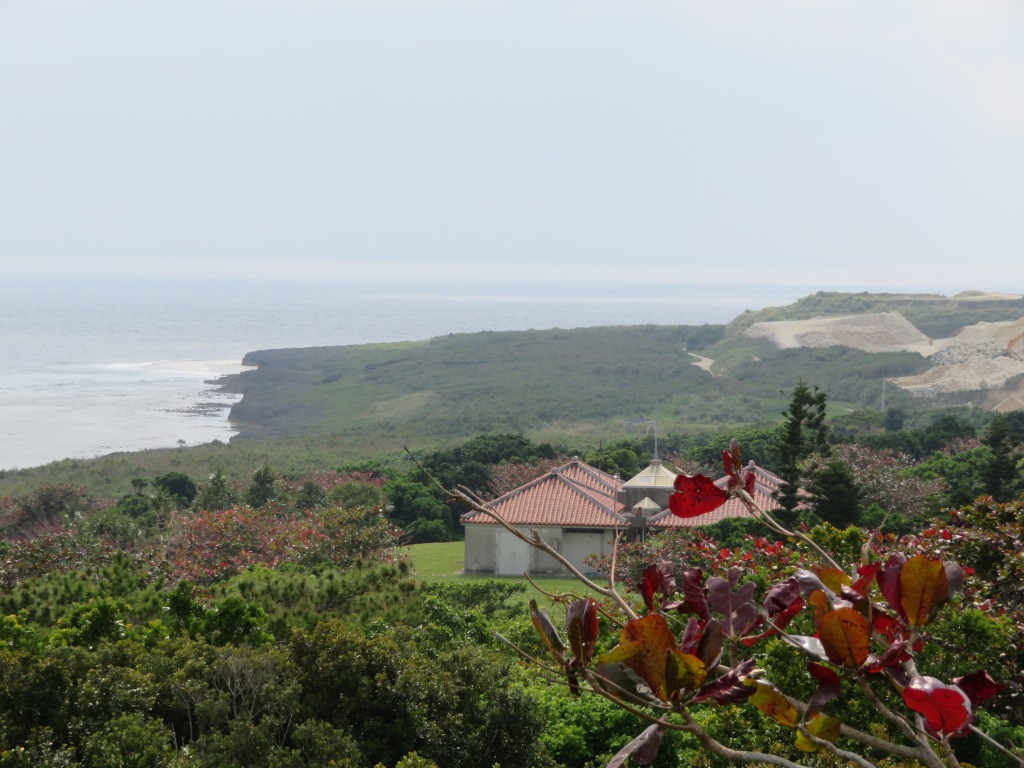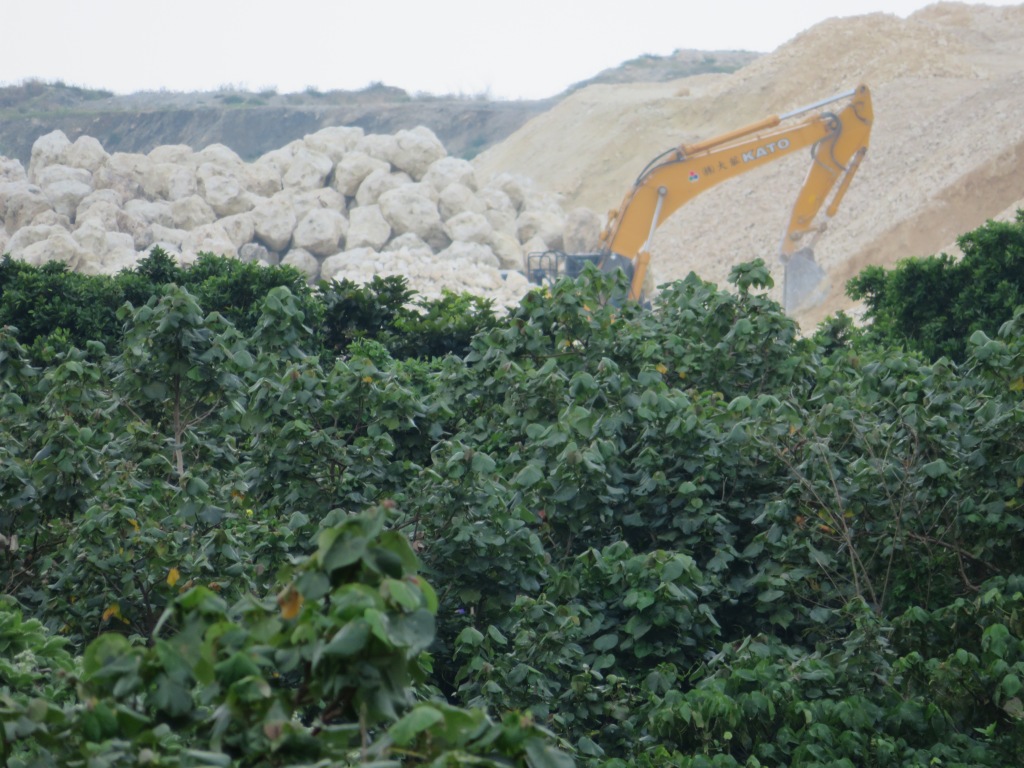Thoughts in the Park
I like walking in Heiwasozo no Mori Koen near my home on the south coast of Okinawa. I go there regularly and it’s also a great place to have lunch out in the open. The spacious park is on a hillside that slopes down to the ocean at the point where the Pacific Ocean meets the East China Sea. On weekdays there are few visitors and I sometimes have the entire place to myself.
Now things are changing. The park itself is the same, thankfully, but a large adjacent area has been taken over by a mining company and is being dug up. As can be seen in these photos taken from the park yesterday, it has become a blot on the otherwise beautiful landscape. On my visit yesterday the noise from dump trucks, and diggers moving rocks and earth, reverberated around the park and was incessant and unrelenting.


This, of course, is an area where there are many memorials and peace monuments to the tens of thousands who suffered unspeakable horrors and terrible deaths here in the Battle of Okinawa in 1945. It’s seen now as a sacred place by Okinawans, where families of war victims visit to pray. Close to the park is one of the most important monuments, Konpaku no To, built by the people to honour all lives lost at this spot which was littered with bones and human remains.
The reason for all the digging nearby is only too well-known in Okinawa but is still a matter of little consequence in Japan and elsewhere. Its purpose is to gather earth for the landfill at the proposed new US military base much further north on the island at Henoko. The rocks, earth and soil will be dumped in the ocean at Oura Bay as a lot more landfill is needed than was at first thought. Long before this, there has been great concern at the damage to the coral reefs, and rare marine creatures of Oura Bay such as the dugong.
Inevitably, the work to provide landfill from Itoman involves digging up the bones of many who died here and whose remains are now mixed in with the soil. There have been many protests and a movement to stop this desecration. These include a weeklong hunger strike earlier this month by activist Takamatsu Gushiken whose volunteer group Gamafuya has been working to uncover and identify the bones of the dead and return them to their families.


But the US war machine rolls on – aided and abetted by Japan and its government who have always shown nothing but ill-disguised disdain for the plight of its colony Okinawa. And it’s all very well talking of the need for better treatment and more autonomy. This looks more than ever like a pipe dream while the Ryukyu Islands remain dependent on Japan.
Meanwhile, the awful irony is that the war dead are now contributing to the construction of yet another unwanted military base on Okinawa. Even after all this time their bones still have no place to rest. They are, in effect, being killed twice, and #dontkilltwice is already widespread on social media campaigns and discussions around the issue.
Much respect is due to those such as Takamatsu Gushiken who never gives up, and to the persistence of peace activists in Okinawa who never forget the lessons of war. Also, to those of the Okinawa diaspora who are helping to bring this matter to the attention of the outside world.
Explore posts in the same categories: Notes from the Ryukyus
March 10, 2021 at 4:49 pm
This is terrible and I’m amazed it’s allowed to happen. Why is there no soil elsewhere on the islands that can be used?
March 10, 2021 at 5:16 pm
Exactly.
December 9, 2021 at 7:36 am
The passage well describes the present situation of Okinawa, which I dare to say has long been militarily colonized by the US and Japan. I was touched to read this.